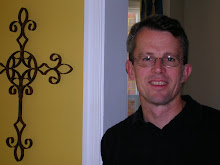The Experts Were Wrong -- FPC sermon excerpt
If a doctor had examined Jesus after the crucifixion, he might have missed the exact cause of death.
Physicians make mistakes.
Lots of them.
I tend to trust my doctors, but I guess I’ve been one of the lucky ones. Studies reveal that there is a one-in-twelve chance that a doctor’s diagnosis will be wrong. So wrong, in fact, that it causes the patient harm.
But medicine is not the only danger area. Having just filed your federal tax returns, you might want to know that professionally prepared returns are more likely to have serious errors than returns you prepare yourself. Fifty percent of all newspaper articles have at least one incorrect fact. And the studies published in economic journals? Economists say that they are all likely to be wrong.
All of them.
Not that I am pointing fingers. When homeless people come to the church for help, I am sure that I assist some people who go out and descend deeper into drug or alcohol abuse. Other times, I fail to help people with legitimate, life-and-death needs.
The experts are wrong.
David Freedman has included these shocking discoveries in a book called Wrong: Why Experts Keep Failing Us — and How to Know When Not to Trust Them. He is encouraging us all to be smarter about how we search for advice, and to ask tough questions of those who claim to be experts.
So who were the experts of
The chief priests, the Pharisees, Pontius Pilate, maybe even the male disciples of Jesus.
Wrong. Wrong. Wrong. Wrong.
At least when it came to the resurrection.
The Gospel of Matthew tells us that on the first day of the week, early in the morning, Mary Magdalene and the other Mary go to see the tomb of Jesus (Matthew 28:1). The two Marys are non-experts, of course. Through most of the gospel, women such as these two are seen as background personalities, without speaking roles. There is little indication that they matter much to Jesus or the church.
Until now.
Suddenly there is a great earthquake, as an angel of the Lord comes and rolls back the stone and sits on it. His appearance is like lightning, and his clothing is as blinding white as sunlight on snow. The Jewish guards at the tomb are terrified, and become stiff as corpses (vv. 2-4). They have been put in place by the experts of
The ones who see the truth are the guards. Non-experts.
The angel says to the women, “Do not be afraid; I know that you are looking for Jesus who was crucified. He is not here; for he has been raised, as he said. Come, see the place where he lay” (vv. 5-6). The women inch closer to the tomb, surely feeling dread, but also intense curiosity. Of all the followers of Jesus, they are the only ones who have stayed close to the body of Jesus since the crucifixion. These two were the only ones who remained at the tomb on Friday night, when Joseph of Arimathea took the body of Jesus, wrapped it in a clean linen cloth, and laid it in his own new tomb (27:57-61).
Mary Magdalene and the other Mary are not experts. But give them credit — they do show up. At the right time. In the right place. As Woody Allen says, “Ninety percent of life is just showing up.” Their success as followers of Jesus comes from simply showing up. That was true for them, and it is true for us today, especially in the life of the church. We can each do a lot of good for God, simply by showing up.


0 Comments:
Post a Comment
<< Home